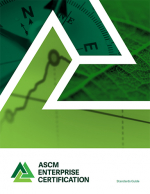Strategic Supply Chain Management: The Five Disciplines for Top Performance
In this book, we set out to offer readers our understanding of the current state of supply chain management theory and practice based on our experience and observations from engagements on supply chain projects at over 600 organizations.
This is the book that we at PRTM wanted to write almost a decade ago, and yet at that time we merely would have been speculating about the future development of supply chain management as a core management discipline.
For instance, we very likely would have underestimated the impact of information technology and ignored some emerging best practices.
This book is the result of a 15-year history of research, benchmarking, and client results in this discipline at PRTM and an equivalent level of experience by the authors, PRTM partners Shoshanah Cohen (Mountain View, California) and Joseph Roussel (Paris, France).
In this book, we set out to offer readers our understanding of the current state of supply chain management theory and practice based on our experience and observations from engagements on supply chain projects at over 600 organizations.
We also offer profiles of recent transformative supply chain initiatives at major companies and the U.S. Department of Defense (the largest supply chain in the world).
Finally, we offer our perspective on future challenges in the development of competitive, customer-facing supply chains.
This book focuses rightly on the present and the future; it is here in the Foreword that we hope to provide some historical perspective on how supply chain management came to be the dominating management discipline of the late 1990s and how it has become the root of huge investments in enterprise resource planning (ERP) and advanced planning and scheduling (APS) systems implementations in almost every major global corporation.
This book is intended to place the supply chain at the heart of strategic and tactical decision making in the modern corporation.
The authors urge you to structure your supply chain into five core disciplines:
- View your supply chain as a strategic asset.
- Develop an end-to-end process architecture.
- Design your organization for performance.
- Build the right collaborative model.
- Use metrics to drive business success.
Those rather deceptively simple ideas are buttressed with examples from heavyweight supply chain practitioners including Eli Lilly, the U.S. Department of Defense, Owens Corning, and General Motors.
One important lesson: Listen to friends. In the 1990s, airbag manufacturer Autoliv saw its supply chain process hitting its limit. The company tried to fix its own problems, but after years of little success, Autoliv turned to a customer for advice: Toyota. In two years, the company had adapted the Toyota Production System and its manufacturing process was transformed.
The final chapter details how to create a roadmap for change, underlining the importance of integrating strategy, process, organization, and information systems.
What’s Related




Favorites





